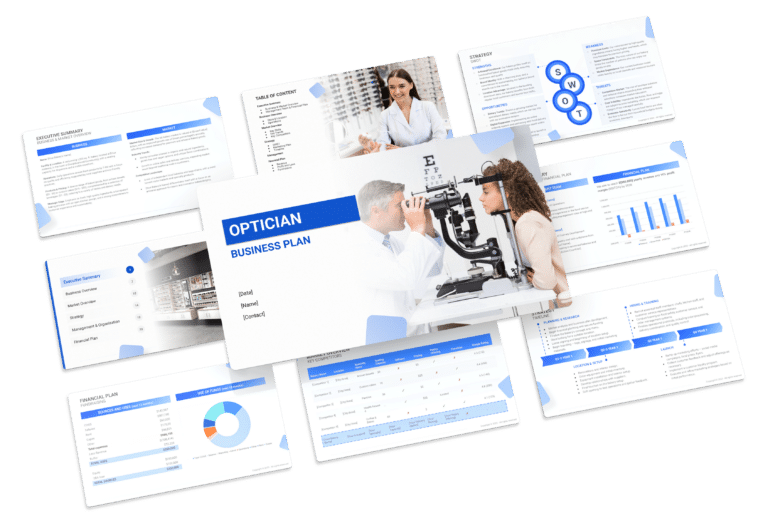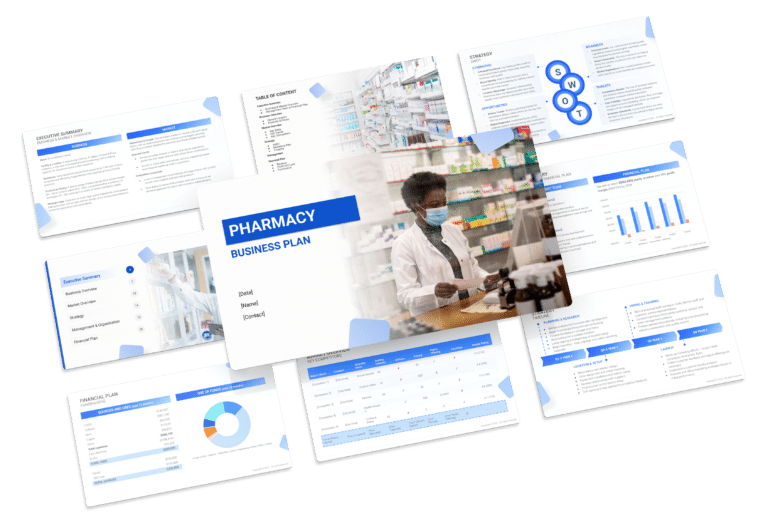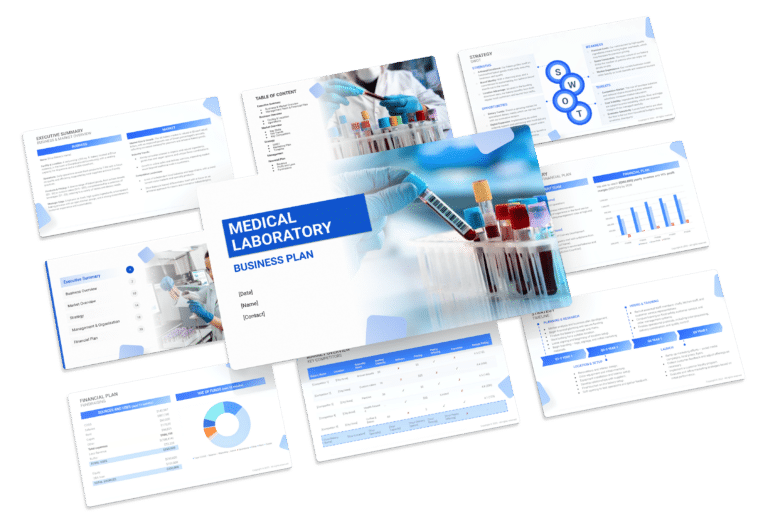SWOT Analysis for a Pharmacy (Example)

A SWOT analysis is crucial for developing a business plan for a pharmacy. This analysis, which stands for Strengths, Weaknesses, Opportunities, and Threats, helps in understanding both internal and external factors that can impact your business. Strengths and weaknesses are internal to the business, while opportunities and threats are external.
In this article, we will explore various examples of strengths, weaknesses, opportunities, and threats, aiding owners and stakeholders in formulating effective strategies.

Strengths
Highlight the strengths that can fortify a pharmacy’s position in the market:
- Expert Staff: Employing trained pharmacists and knowledgeable staff capable of providing personalized advice and guidance to customers.
- Example: Offer medication therapy management services or consultations to improve patient health outcomes and loyalty.
- Diverse Product Range: Carrying an extensive inventory of prescription and over-the-counter medications, supplements, healthcare products, and medical equipment.
- Example: Emphasize the wide range of available products through informative displays and online catalogs for customer convenience.
- Convenient Location: Situating the pharmacy in a strategic, easily accessible location ensures convenience for customers seeking immediate healthcare solutions.
- Example: Utilize signage and online maps to highlight the pharmacy’s location and proximity to healthcare facilities or residential areas.
- Digital Services Integration: Offering online prescription refills, telemedicine services, and mobile apps for streamlined customer interaction and access.
- Example: Develop a user-friendly mobile app enabling prescription refills, appointment scheduling, and health-related tips or reminders.
Weaknesses
Address weaknesses for sustained growth and competitiveness:
- Limited Marketing Initiatives: Insufficient marketing efforts or an inadequate digital presence might result in reduced visibility and customer outreach.
- Example: Implement targeted digital marketing campaigns, social media engagement, and partnerships with healthcare providers for increased visibility.
- Inventory Management Challenges: Issues related to stockouts, expired medications, or inefficient inventory turnover leading to financial losses.
- Example: Employ inventory management systems and predictive analytics to optimize stock levels, reduce waste, and ensure adequate availability of essential medications.
- Regulatory Compliance Burden: Adhering to stringent regulatory requirements and frequent changes in healthcare laws and policies.
- Example: Invest in continuous staff training and enlist legal counsel to ensure compliance, preventing potential penalties or legal issues.
- Dependency on External Suppliers: Over-reliance on specific suppliers might pose risks related to pricing fluctuations or product availability.
- Example: Cultivate relationships with multiple suppliers to diversify sources and negotiate better terms for procurement.
Opportunities
Seize opportunities to foster growth and innovation:
- Expanded Healthcare Services: Introducing additional healthcare services such as vaccinations, health screenings, or wellness programs.
- Example: Collaborate with healthcare providers or local clinics to offer on-site health checks or community health events.
- Focus on Personalized Healthcare: Embracing personalized medicine trends and offering customized medication compounding or genetic testing services.
- Example: Invest in specialized equipment and staff training to cater to individual patient needs and preferences.
- Telehealth Integration: Leveraging telehealth advancements to provide remote consultations and medication deliveries.
- Example: Develop partnerships with telehealth platforms or create an in-house teleconsultation system for patient convenience.
- Aging Population Demands: Addressing the needs of an aging population by offering specialized senior care services and products.
- Example: Designate a section in the pharmacy for elderly-friendly products, organize informational sessions on elderly care, and offer home delivery services.
Threats
Prepare for threats to ensure sustained success:
- Intense Competition: Competition from retail chains, online pharmacies, and big-box stores with aggressive pricing strategies.
- Example: Highlight personalized services, healthcare expertise, and quick access to pharmacists as differentiating factors.
- Healthcare Reforms and Policies: Changes in healthcare policies, insurance reimbursements, or government regulations impact pharmacy operations.
- Example: Stay abreast of policy changes, participate in advocacy groups, and adapt business models to comply with evolving healthcare reforms.
- Counterfeit Medications: Infiltration of counterfeit or substandard medications into the market, posing health risks and damaging the pharmacy’s reputation.
- Example: Educate customers about identifying genuine medications, ensure stringent procurement procedures, and emphasize product authenticity.
- Supply Chain Disruptions: Disruptions in the pharmaceutical supply chain due to global crises, natural disasters, or transportation issues.
- Example: Maintain reserve stock, diversify suppliers geographically, and establish contingency plans to mitigate supply chain disruptions.





